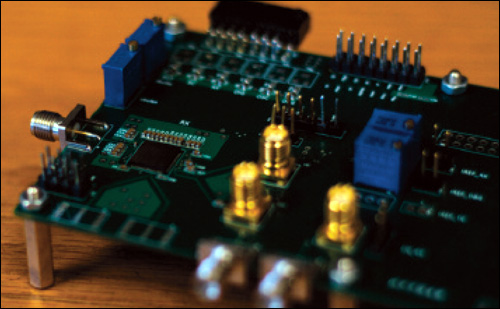A smaller, less expensive microchip is the holy grail of the radio frequency identification industry. An inexpensive chip would reduce the total cost of a transponder—and cheaper transponders would enable companies to track and manage more assets, including low-cost items. Researchers at North Carolina State University may have discovered a way to reduce the cost of a passive ultrahigh-frequency RFID chip by 25 percent.
The researchers have applied a new approach called RF-only logic. They eliminated a circuit called the rectifier, which takes the alternating current (AC) signal received from a nearby RFID reader and turns it into direct current (DC) to power a chip’s logic circuits.
The biggest challenge was overcoming the fact that energy could only be delivered to the chip during half of the RF wave cycle. The circuits the researchers developed prevent the energy from leaking away until more energy is delivered, so the chip gets a steady stream of electricity.
The innovative approach was the result of a “curiosity-driven project,” says Paul Franzon, a professor of electrical and computer engineering at NC State. “A group of us were brainstorming a circuit that could run off of harvested RF power. We speculated that you could have a distributed power rectification system. Then, we thought about where such an approach might be beneficial, and we realized RFID was a good application.”
Several Ph.D. students are working to build a prototype and ensure it can comply with existing RFID standards. If successful, the approach could lead to smaller, less expensive ICs, which would lower overall tag costs.
The one downside of this approach is that tags will likely have a shorter read range than conventional RFID transponders, but they could be useful for applications in which read range is not critical. And over time, Franzon says, techniques could be developed to store more energy for longer reads.
Franzon has filed for a patent and expects to license the RF-only logic approach to RFID chip producers. “If it doesn’t work out,” he says, “we might be interested in starting our own venture.”


